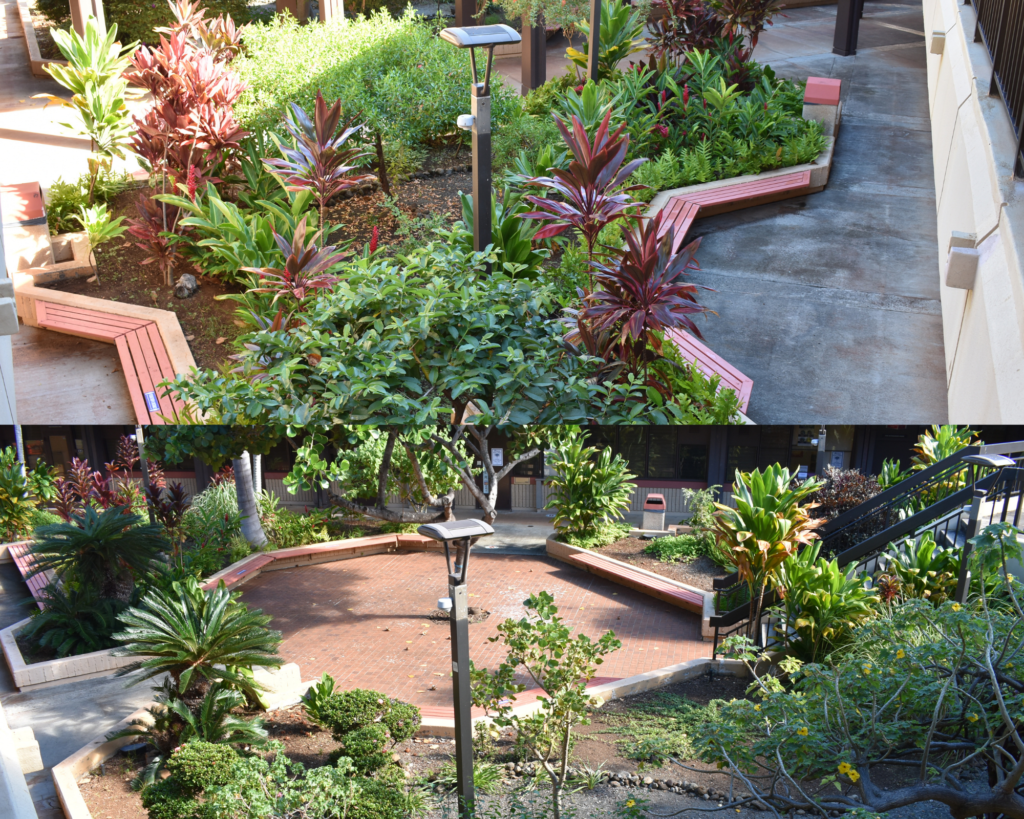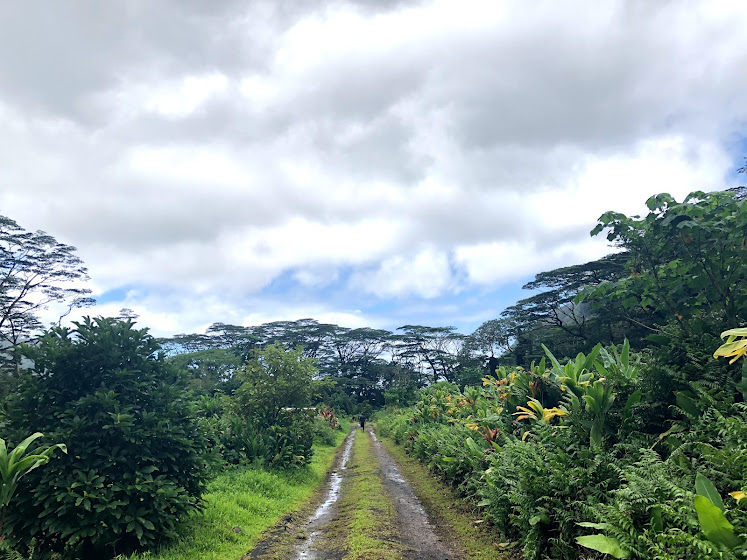KapiolaniCC Botanical Gardens

Kapiolani Community College
Botanical Gardens
Aloha! Welcome to Kapiolani Community College Botanical Gardens
Plant Diversity Caretakers Bioculture Endemic Native Hawaiian Effort Education Importance Botanical Gardens Information Culture Natural Remedies Signage Endangered Indigenous
About This Project:
The purpose of this page is to educate visitors, as well as students and faculty, on the various native plants that these gardens have to offer through different plant signs on campus. This undergraduate research experience project started in Spring 2020 as part of a National Science Foundation Grant Bridges to Baccalaureate grant (B2B) (LSAMP: NSF award HRD-1619702).
We would like to acknowledge the natural beauty that is diminishing slowly due to lack of knowledge and appreciation of these gardens.
If we can increase interaction between our campus communities and plant life, we can increase conservation efforts on campus.
Currently KapCC has
Different Botanical Kokiʻo Native Hawaiian Plant Rain Māunuunu Gardens
On campus with a diverse range of native plant species and non-native plant species with multiple biogeographical origins.
Native Botanical Signage Team
Emma Ho
Aloha everyone! My name is Emma Ho and I’m a Natural Science major with a concentration in Conservation Biology. My interest in starting the ‘Native Plants Botanical Signage’ project began with the Service Learning program as a student leader of our Native Gardens at KCC. In my first semester as the Environmental Pathway Leader, I struggled to learn each of the plant’s names and their cultural importance. It was really difficult for me to memorize and research each of the plants we worked with in the gardens, and thinking to the future; it would be difficult to pass down this knowledge to the next person. Thus, this project was born out of the desire to learn and promote the education and appreciation of native plants to the visitors of our campus gardens.
With this project, we are able to represent the endangered, endemic, and indigenous plants at KCC to raise awareness and cultural appreciation of their applications. Our online database streamlines scientific and cultural information together; melding culture and technology into one. We hope that you can use this online space to share, learn, and discover more about our amazingly unique native plants that call our island home!
~ Mahalo nui loa ~
Gʻvoni Kalaiwaa

Aloha mau kanaka,
I am G’voni Kalaiwaa and I go by Lei. I major in Botany BA at the University of Hawaii at Manoa. My interest in this Native Botanical Gardens Project at Kapi’olani Community College grows from my aspirations to conserve the remaining native lands by sustaining native Hawaiian plants and sharing their cultural histories all while integrating science as support.
It has become important for me to make connections between culture and science because I have found that I have lost touch with my culture because of colonial disruptions. I want to change this narrow perspective and provide frameworks that people are not aware of. Take the time to learn about our plants here at KCC, as they do every day when they survive around us. Mahalo!
Kohlby Soong

Aloha e nā hoaʻāina,
I am Kohlby-Vincent Soong from the drylands of Maunalua, Oʻahu. I am currently in my senior year at the University of Hawaiʻi at Hilo chasing a degree in Environmental Science. I chose this degree to better in tune myself with the natural world and to understand my kinship as a Hawaiian to the universe that surrounds me. This education helps support my career goals in the realm of Aloha ʻĀina: creating fertile soils for good meals +medicines, and protecting healthy watersheds through native biodiversity.
I chose to hop on the plant project here at KCC to bring awareness surrounding the rare, endangered, native, and good tasting + healing plants that can be found across campus. Ive worked alongside these plants and soils for about three years at Māla Māunuunu and have grown a relationship with these plants. Plants that feeds, plants that heal, and plants that are just good looking. The importance of this project is to educate the people about how these unique plants function into our lifestyles, in hopes to inspire the people to protect and preserve these natural resources from dying off. E Ola!
Giavonna Kalaiwaa

Aloha kakou,
I am Giavonna Kalaiwaa coming from Godʻs Country, sweet home Waimanalo. I recently changed my major from environmental engineering to information technology with a focus on creating safe spaces for people to not only store the important data that they collect but also share their findings with other people who are interested in what they find. My goal is to become more familiar with the technology realm as well as my hawaiian culture to intertwine the two and pass on knowledge that Im not only interested but maybe even share my passion with others who are learning just like me.
I choose to join this plant project at KCC because it brings everything that I want to do for a career all in one, technology and hawaiian culture/ native hawaiian plants. This project helps me bridge the information collected about the plants on campus, native and non-native, and help educate people who come onto campus. This is important because people can learn about the different plants that KCC has to offer and how our hawaiian ancestors used them. Mahalo
Keahi Akina
Aloha,
Jacob Kaai

Hello, my name is Jacob Kaai. I am a physical science major at Kapiolani Community College. I am born and raised in Hawaii. I am interested in this project because I love the plants here in my home. I think Hawaii is specifically interesting due to the lack of predators in a lot of different areas of biology here which led to really unique plants which I’m grateful to share a culture with.
I chose to join this project because I feel a strong connection towards life here in Hawaii and plants are a big part of what makes Hawaii special and identifying elements of beauty is an important part of that. Having an easy-to-access database for that would be a great way to help curious minds learn about it. This project is very useful in a broad amount of ways and I am happy to contribute to this research and work with my peers to achieve a common goal.
Mahalo, Jake






